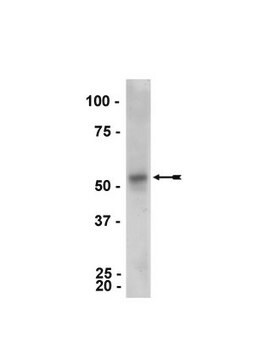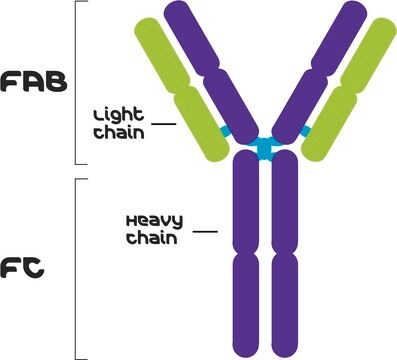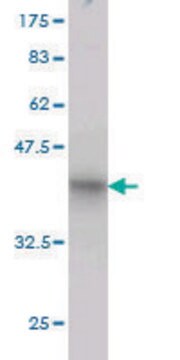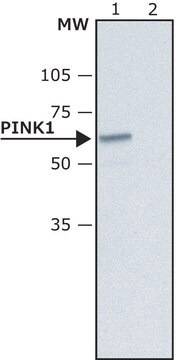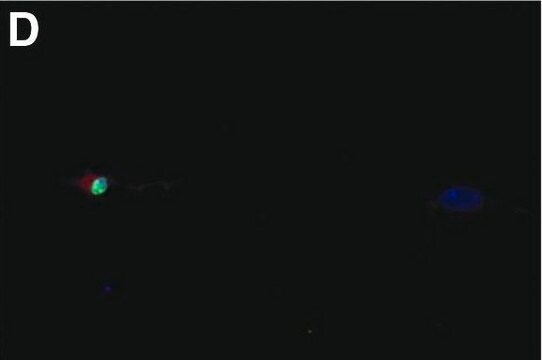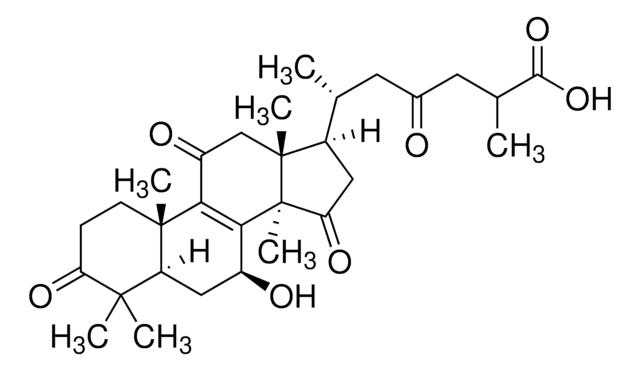P6248
Anti-Parkin antibody, Mouse monoclonal
clone PRK8, purified from hybridoma cell culture
Sinónimos:
Anti-AR-JP, Anti-LPRS2, Anti-PARK2, Anti-PDJ
About This Item
Productos recomendados
biological source
mouse
Quality Level
conjugate
unconjugated
antibody form
purified immunoglobulin
antibody product type
primary antibodies
clone
PRK8, monoclonal
form
buffered aqueous solution
species reactivity
mouse, rat, hamster, human
concentration
~2 mg/mL
technique(s)
microarray: suitable
western blot: 0.25-0.5 μg/mL using using rat brain cytosolic S1 extract
isotype
IgG2b
shipped in
dry ice
storage temp.
−20°C
target post-translational modification
unmodified
Gene Information
human ... PARK2(5071)
mouse ... Park2(50873)
rat ... Park2(56816)
General description
Immunogen
Application
- Enzyme linked immunosorbent assay (ELISA)
- Immunoblotting
- Immunoprecipitation[63}
- Immunocytochemistry
- to label parkin in pull-down assay
Physical form
Disclaimer
¿No encuentra el producto adecuado?
Pruebe nuestro Herramienta de selección de productos.
Storage Class
10 - Combustible liquids
wgk_germany
WGK 3
flash_point_f
Not applicable
flash_point_c
Not applicable
ppe
Eyeshields, Gloves, multi-purpose combination respirator cartridge (US)
Elija entre una de las versiones más recientes:
¿Ya tiene este producto?
Encuentre la documentación para los productos que ha comprado recientemente en la Biblioteca de documentos.
Nuestro equipo de científicos tiene experiencia en todas las áreas de investigación: Ciencias de la vida, Ciencia de los materiales, Síntesis química, Cromatografía, Analítica y muchas otras.
Póngase en contacto con el Servicio técnico
